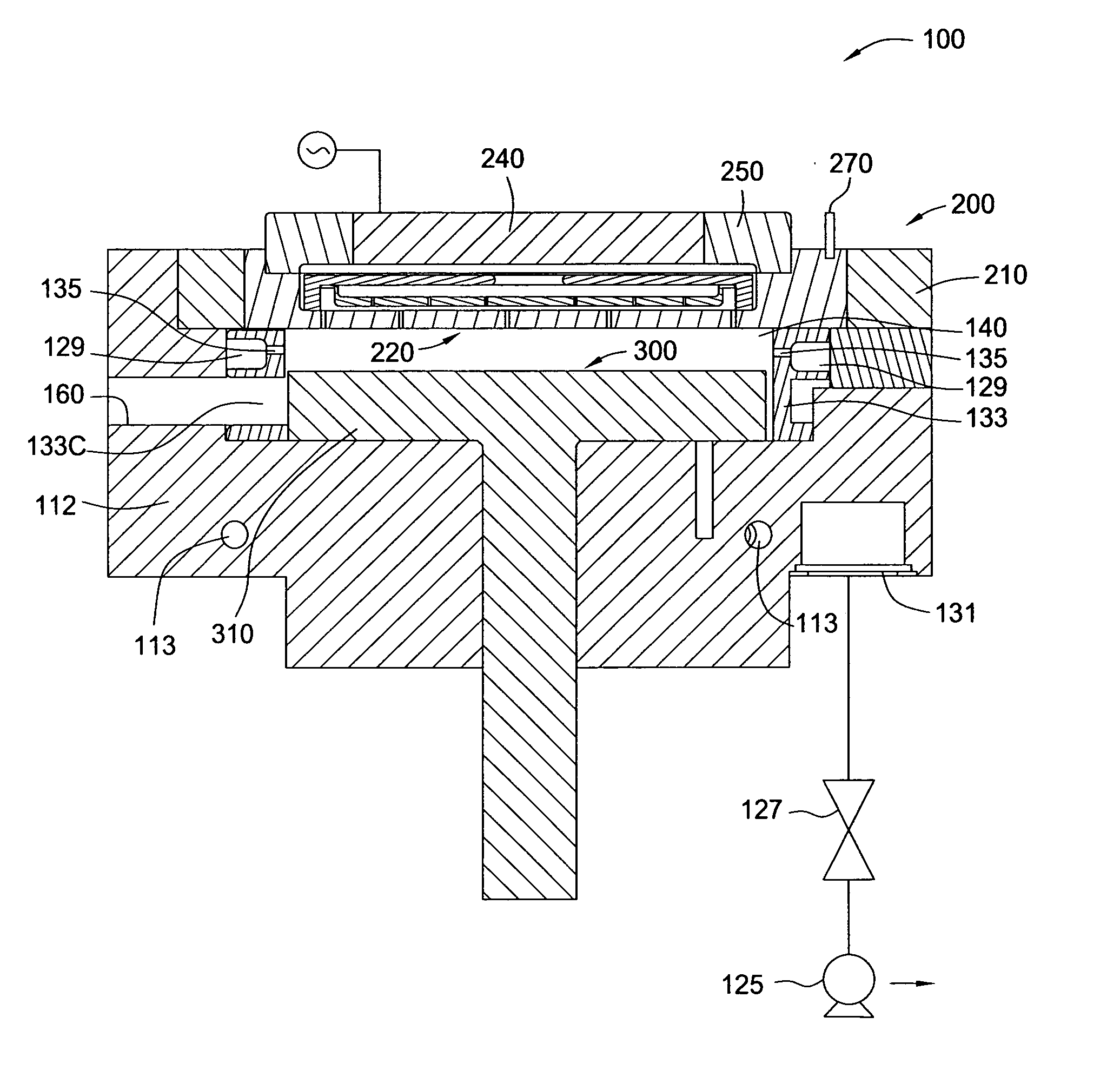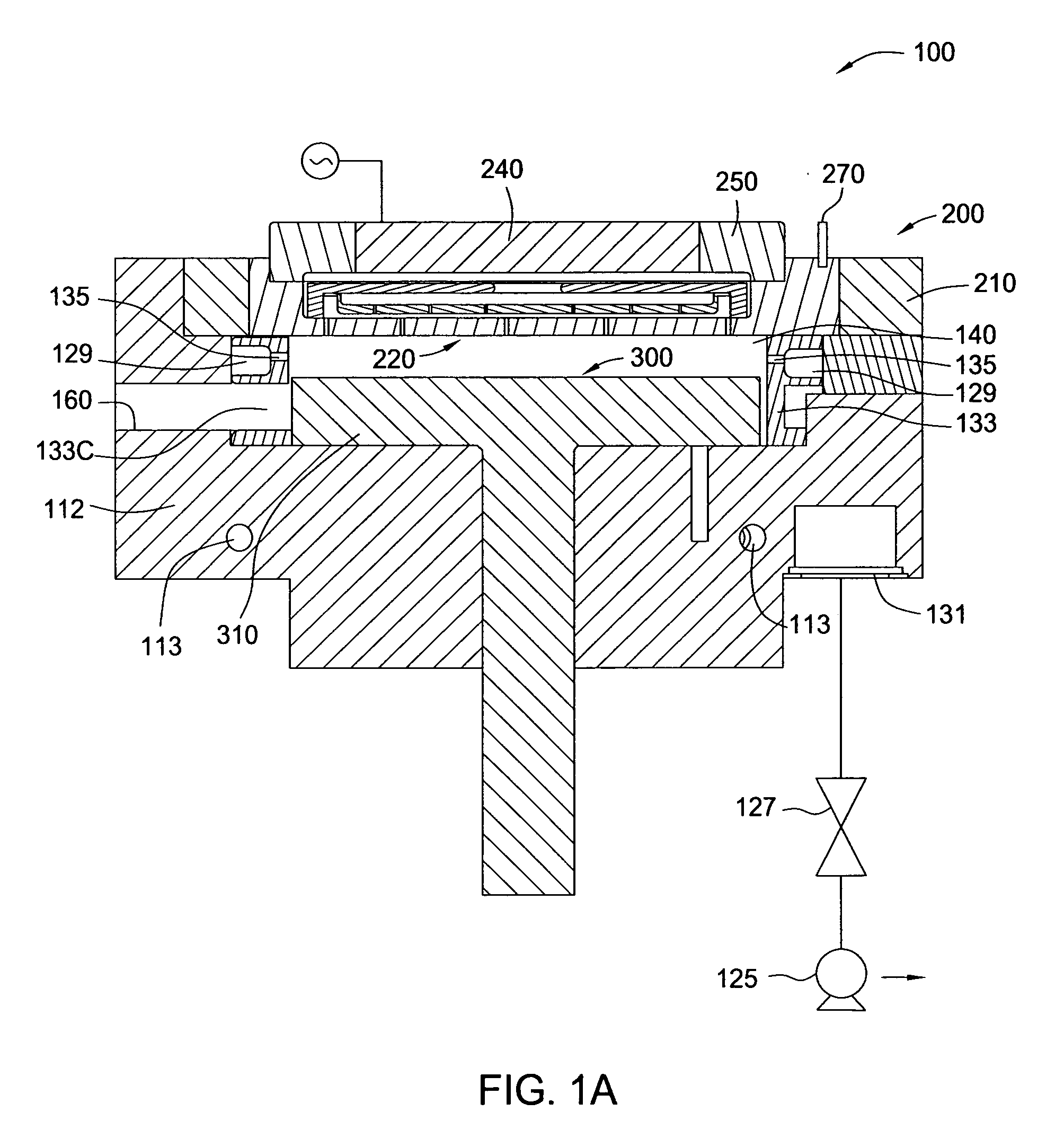Lid assembly for front end of line fabrication
a front-end line and assembly technology, applied in the direction of vacuum evaporation coating, semiconductor/solid-state device details, transportation and packaging, etc., can solve the problems of difficulty in subsequent fabrication processes, and native oxides forming undesirable films on the substrate surface, etc., to achieve the effect of increasing the inner diameter
- Summary
- Abstract
- Description
- Claims
- Application Information
AI Technical Summary
Benefits of technology
Problems solved by technology
Method used
Image
Examples
example
[0120] During etch, a gas mixture of 2 sccm of NF3, 10 sccm of NH3 and 2,500 sccm of argon was introduced into the chamber. A plasma of the gas mixture was ignited using 100 Watts of power. The bottom purge was 1,500 sccm of argon and the edge purge was 50 sccm of argon. The chamber pressure was maintained at about 6 Torr, and the substrate temperature was about 22° C. The substrate was etched for 120 seconds.
[0121] During subsequent annealing, the spacing was 750 mil and the lid temperature was 120° C. The substrate was annealed for about 60 seconds. About 50 angstroms of material was removed from the substrate surface. No anneal effect was observed. The etch rate was about 0.46 angstroms per second (28 Å / min). The observed etch uniformity was about 5% for the 50 Å etch.
[0122] Unless otherwise indicated, all numbers expressing quantities of ingredients, properties, reaction conditions, and so forth, used in the specification and claims are to be understood as approximations. Thes...
PUM
| Property | Measurement | Unit |
|---|---|---|
| thick | aaaaa | aaaaa |
| thick | aaaaa | aaaaa |
| diameter | aaaaa | aaaaa |
Abstract
Description
Claims
Application Information
 Login to View More
Login to View More - R&D
- Intellectual Property
- Life Sciences
- Materials
- Tech Scout
- Unparalleled Data Quality
- Higher Quality Content
- 60% Fewer Hallucinations
Browse by: Latest US Patents, China's latest patents, Technical Efficacy Thesaurus, Application Domain, Technology Topic, Popular Technical Reports.
© 2025 PatSnap. All rights reserved.Legal|Privacy policy|Modern Slavery Act Transparency Statement|Sitemap|About US| Contact US: help@patsnap.com



